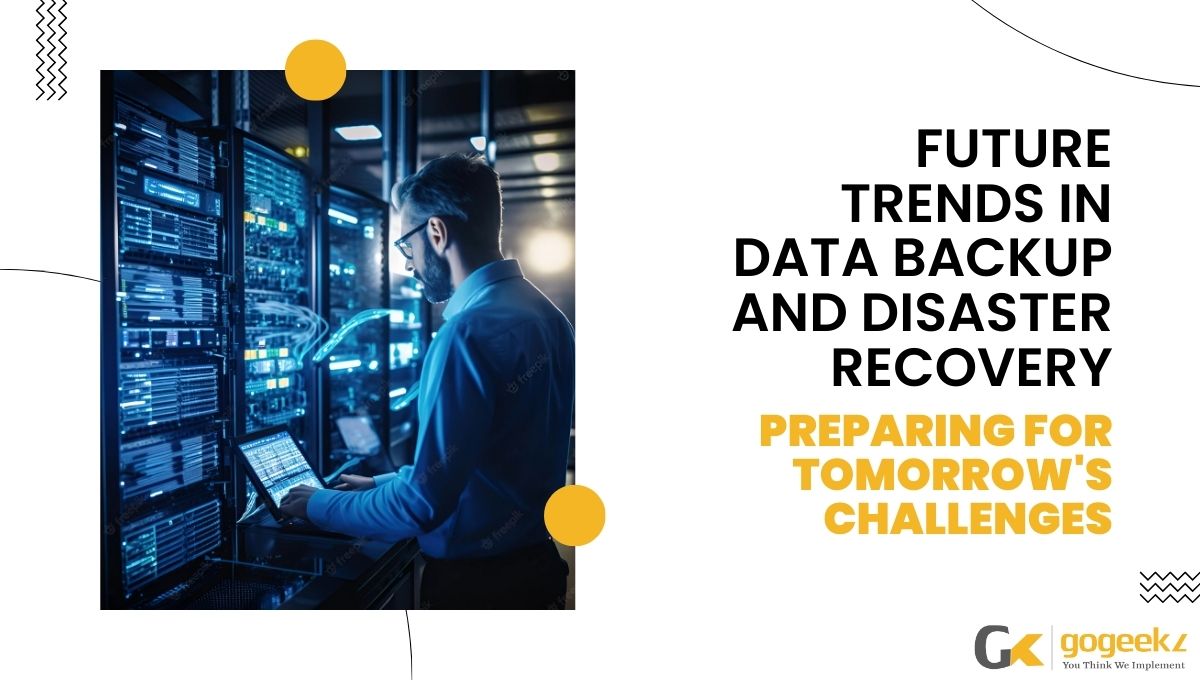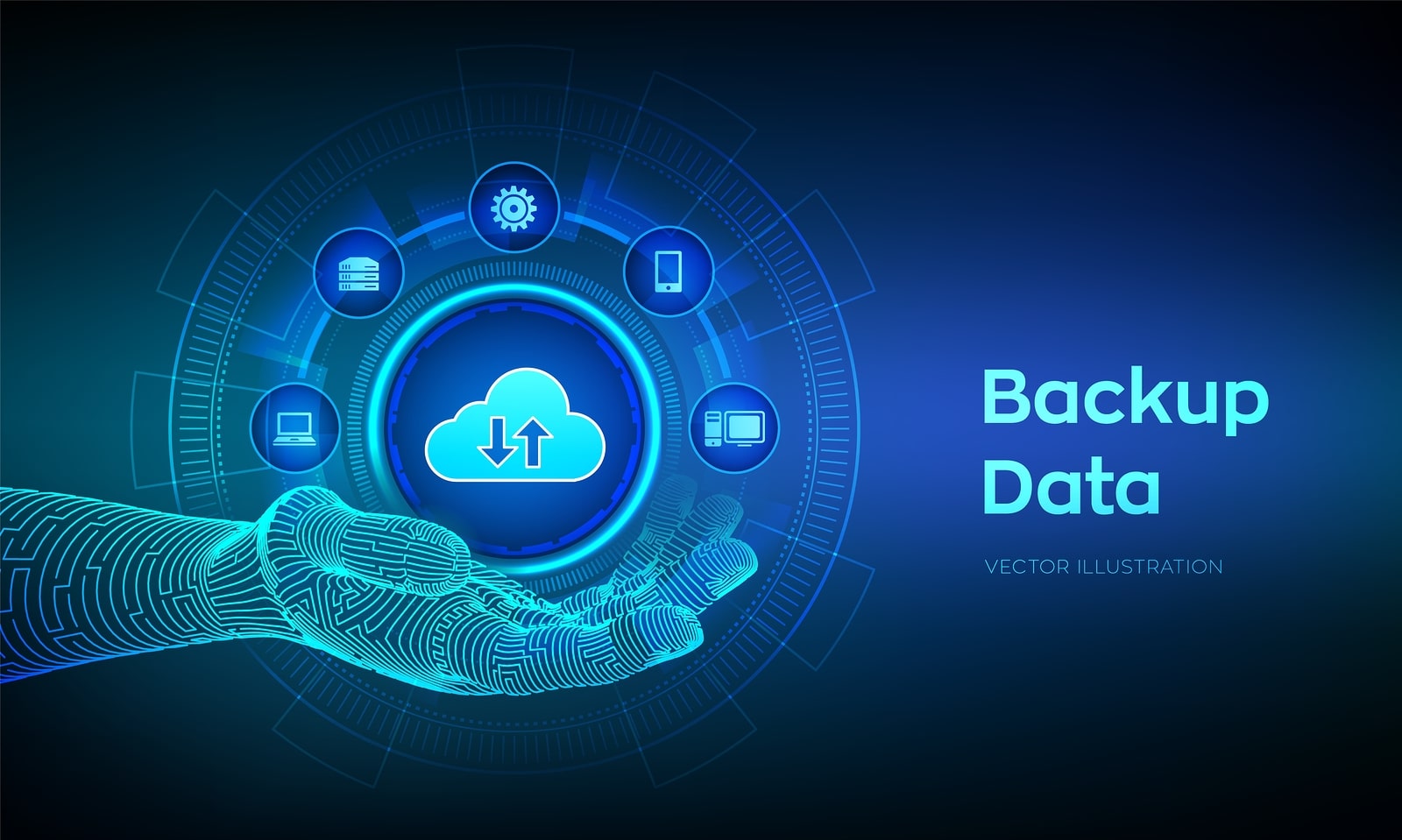Introduction: Data Is Your Most Valuable Asset — But It’s Always at Risk
In today’s digital-first world, data is the lifeblood of every business, especially for SMBs relying on cloud systems, remote work, and third-party integrations. But with this increasing dependency comes a growing number of threats — from ransomware attacks and hardware failures to natural disasters and insider threats.
Fact: According to the Ponemon Institute, 60% of SMBs that lose data due to a disaster or breach go out of business within 6 months.
If 2024 taught us anything, it’s that traditional backup methods are no longer enough. The future of data protection lies in smart, scalable, and automated strategies — and businesses that don’t adapt may be left vulnerable.
In this blog, we’ll explore the top trends shaping the future of data backup and disaster recovery (DR) — and how SMBs like yours can prepare for tomorrow’s challenges, today.
Why Rethink Backup & DR in 2025?
The backup landscape is evolving rapidly due to:
- More cloud-native environments
- Rise of remote/hybrid work
- Increase in ransomware-as-a-service (RaaS)
- Compliance regulations like PIPEDA, GDPR, HIPAA
- New cyberattack vectors (e.g., AI-generated malware)
This means businesses must move from simply saving data to building resilience into their operations.
Top 7 Future Trends in Backup & Disaster Recovery
1.Ransomware-Resistant Backup Is No Longer Optional
Ransomware is now the #1 cause of data loss worldwide — and attackers have evolved to target backup systems first to eliminate recovery options.
Use Case: A logistics firm in Vancouver suffered a ransomware attack in late 2024. Their backups were stored on the same network and were encrypted by the attacker. With no air-gapped solution in place, they paid a $70,000 ransom just to regain access.
2025 Best Practices:
- Use immutable backups that can’t be altered or deleted
- Store backups in air-gapped or off-site environments
- Leverage ransomware detection in your backup solution
- Enable versioning so you can roll back to clean states🧠 Pro Tip: Choose solutions like Veeam, Acronis, or GoGeekz Backup Suite with built-in ransomware protection.
2. Backup-as-a-Service (BaaS) Gains Traction
Cloud-based Backup-as-a-Service (BaaS) is becoming the go-to solution for SMBs. It offers automated, scalable backup without the hassle of maintaining hardware or manually checking logs.
Benefits of BaaS:
| Feature | Benefit |
| Fully managed | Reduces IT burden |
| Pay-as-you-grow | Ideal for scaling businesses |
| Off-site by default | Protects against physical loss |
| Remote monitoring | Easy to audit and track |
Industry Fact: Gartner predicts that 50% of organizations will abandon traditional backup tools for BaaS by 2026.
3. AI-Powered Disaster Recovery Orchestration
Manual recovery processes are slow, complex, and error-prone. AI is now being used to:
- Predict risks before failures occur
- Automatically trigger failovers
- Optimize recovery point objectives (RPO) and recovery time objectives (RTO)
Example: A fintech startup in Toronto uses AI-based orchestration to automatically replicate critical workloads to AWS when anomalies are detected on Azure.
Pro Tip: Look for DR solutions with predictive analytics, self-healing scripts, and multi-cloud orchestration.

4. Granular, Application-Level Backups
Old-school backups were full-system images. Now, SMBs need the ability to recover specific apps, databases, or even emails without restoring the whole machine.
Popular Application-Level Backup Targets:
- Microsoft 365 (Exchange, SharePoint, OneDrive, Teams)
- Google Workspace
- QuickBooks or accounting software
- CRMs like Salesforce or HubSpot
- E-commerce platforms like Shopify or WooCommerce
Tip: Don’t assume SaaS apps back themselves up — Microsoft 365 and Google Workspace do not guarantee full data recovery.
5. Compliance-Driven Backup Strategies
Governments are tightening data protection laws. In 2025, compliance isn’t just about having backups — it’s about how long you retain data, how securely you store it, and how fast you can recover it.
Key Frameworks to Watch:
- PIPEDA (Canada)
- GDPR (EU)
- HIPAA (Healthcare)
- SOC 2, ISO 27001, NIST for U.S.-based orgs
Tip: Ensure your backup vendor provides audit trails, data residency control, and encryption in-transit and at rest.

6. Hybrid & Multi-Cloud Backup Strategies
No single platform can offer 100% uptime or protection. That’s why smart SMBs are using hybrid cloud and multi-cloud environments to build redundancy.
Benefits:
- Avoid vendor lock-in
- Maintain control with on-prem storage + cloud failover
- Optimize cost and performance with workload-specific cloud selection
Example: A marketing agency runs daily operational workloads in Google Cloud but replicates weekly backups to AWS Glacier for long-term storage.
7. Testing DR Plans Is Becoming Automated & Mandatory
Having a DR plan is not enough — it must be tested, validated, and documented regularly. In 2025, DR testing can be fully automated, reducing manual effort and increasing confidence in your recovery capabilities.
Best Practices:
- Simulate ransomware attacks or hardware failures
- Test failovers at least quarterly
- Validate both RTOs and RPOs against real-time metrics
- Train non-IT staff on their DR roles
Real-World Data: According to IDC, only 23% of SMBs test their disaster recovery plans more than once a year — and those that don’t are 3x more likely to suffer from extended downtime.
Also Read : Top Emerging Cyber Threats to Watch Out
Common Mistakes to Avoid
| Mistake | Why It’s Risky |
| Relying on local-only backups | Can be lost in fire, flood, or ransomware |
| Not automating backups | Leads to outdated or incomplete recovery points |
| Assuming SaaS tools backup everything | They don’t — especially email, chat, and deleted files |
| Not testing restores | You won’t know if your backups are usable |
| No documentation or ownership | Delays recovery and increases panic |
Tips & Tricks to Future-Proof Your Backup Strategy
- Use 3-2-1 Rule: 3 copies of data, 2 different mediums, 1 off-site
- Create asset inventory mapping to know what needs protection
- Set backup alerts and monitor them with automated tools
- Use role-based access control for backup admins
- Schedule automatic monthly test restores
Metrics to Monitor for Backup & DR
| Metric | Purpose |
| RPO (Recovery Point Objective) | How much data loss is acceptable |
| RTO (Recovery Time Objective) | How fast can systems be restored |
| Backup Success Rate | Measures backup reliability |
| Restore Testing Pass Rate | Validates backup usability |
| Storage Costs | Helps optimize across clouds |
Conclusion
In the future, data will be more valuable — and more vulnerable — than ever. The question isn’t whether a disaster will strike, but when.
Whether it’s ransomware, a cloud outage, or human error, the only businesses that survive are those that plan, test, and evolve their backup and recovery strategies regularly.
At GoGeekz, we help SMBs like yours:
- Set up air-gapped, cloud, or hybrid backups
- Test disaster recovery plans
- Monitor everything with real-time alerts
- Stay compliant and resilient
Ready to future-proof your data?
Book Your FREE Backup & Disaster Recovery Audit Today
FAQs
Industry Experiences
Innovative services for your business
We’re dedicated to making your businesses reliable, efficient, and safe.
We’re a one-stop solution for everything IT you need. Whatever you need, we got you covered:
No. You need redundancy — local + cloud or multi-cloud + off-site replication.
At least quarterly. Some industries (like finance) require monthly simulations.
Not fully. Microsoft maintains availability, not backups. You need a third-party solution.
Complacency — assuming backups are working without monitoring or testing them.
We offer fully managed backup, DR testing, compliance reporting, and ransomware-protected storage for SMBs.



